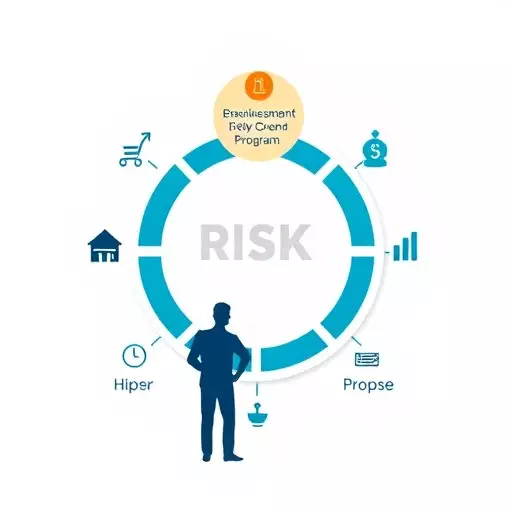Effective EHS (Environmental, Health, and Safety) program development hinges on strategic ehs compliance strategies that integrate comprehensive risk assessment. By analyzing chemical exposures, ergonomic challenges, and environmental influences, organizations can identify and mitigate workplace hazards. Tailored training modules, incorporating interactive methods like scenarios and case studies, enhance learning retention and align with industry best practices. Regular updates, visual aids, and clear instructions further improve outcomes, fostering a proactive safety culture. Continuous risk assessment, employee feedback, and data analysis drive continuous improvement in ehs compliance strategies, ensuring training remains impactful and relevant.
Safety Training Modules Development is a critical aspect of any comprehensive Environmental, Health, and Safety (EHS) program. This article offers a detailed guide on creating effective training modules tailored to diverse industries and roles. We explore key components, from understanding EHS program development and risk assessments to implementing interactive learning techniques and evaluating effectiveness. Discover expert strategies for ensuring EHS compliance through tailored training, enhancing participant engagement, and fostering continuous improvement in safety protocols.
- Understanding EHS Program Development: A Comprehensive Overview
- Key Components of Effective Safety Training Modules
- Strategies for Ensuring EHS Compliance Through Training
- Conducting Thorough Risk Assessments for Comprehensive EHS Programs
- Customizing Training Content for Different Industries and Roles
- Implementing Interactive Learning Techniques for Engaging Participants
- Evaluating and Improving Safety Training Effectiveness: Continuous Improvement Strategies
Understanding EHS Program Development: A Comprehensive Overview

Developing effective Safety Training Modules requires a deep understanding of Environmental, Health, and Safety (EHS) program development. It’s more than just creating content; it involves designing comprehensive strategies that align with industry best practices and regulatory requirements. EHS program development encompasses a systematic approach to identify, assess, and mitigate risks associated with workplace hazards. This process begins with thorough risk assessments that consider various factors such as chemical exposure, ergonomic issues, and potential environmental impacts.
By integrating these assessments into compliance strategies, organizations can proactively manage risks. Well-crafted EHS training modules should not only educate employees on safety protocols but also empower them to recognize potential hazards and take appropriate action. This proactive approach fosters a culture of safety, ensuring that everyone understands their role in maintaining a secure work environment.
Key Components of Effective Safety Training Modules

Effective Safety Training Modules are essential components of any robust Environmental Health and Safety (EHS) program development. To ensure their impact, these modules must incorporate several key elements. Firstly, a comprehensive risk assessment forms the backbone of the training, identifying potential hazards and evaluating associated risks within the workplace. This step is crucial for tailoring the content to address specific safety challenges. Secondly, interactive and engaging delivery methods are vital. Incorporating real-life scenarios, case studies, and hands-on activities enhances learning retention.
Moreover, aligning the modules with established EHS compliance strategies ensures adherence to legal requirements and industry best practices. Visual aids, clear instructions, and regular updates also contribute to successful training outcomes. By integrating these components, organizations can create dynamic safety training resources that foster a culture of safety awareness and preparedness among employees.
Strategies for Ensuring EHS Compliance Through Training

Ensuring Environmental, Health, and Safety (EHS) compliance is a multifaceted process, but it begins with comprehensive training modules. Integrating risk assessment methodologies into EHS program development is pivotal. By meticulously evaluating potential hazards within the workplace, organizations can identify risks and develop targeted training to mitigate them effectively. This strategic approach not only aligns with regulatory requirements but also fosters a culture of safety among employees.
Effective EHS compliance strategies involve creating interactive and engaging training materials that cater to different learning styles. Incorporating real-world scenarios, practical demonstrations, and regular refreshers helps maintain a high level of understanding and adherence to safety protocols. Regular audits and feedback mechanisms further strengthen the program by identifying knowledge gaps and ensuring continuous improvement in EHS performance.
Conducting Thorough Risk Assessments for Comprehensive EHS Programs

Comprehensive EHS (Environmental Health and Safety) program development hinges on meticulous risk assessments. These assessments go beyond surface-level identifications of potential hazards; they delve into understanding the likelihood and severity of risks associated with various work processes, equipment, and facilities within an organization. By employing structured risk assessment methodologies, safety professionals can uncover hidden dangers that may be overlooked during initial inspections or routine audits. This proactive approach is a cornerstone of effective EHS compliance strategies, enabling organizations to implement tailored mitigations that significantly reduce the chances of incidents and injuries.
Thorough risk assessments are not one-time events but rather ongoing processes integrated into the fabric of EHS program development. They should consider historical data, industry best practices, regulatory requirements, and employee feedback to paint a holistic picture of an organization’s safety landscape. Through this rigorous evaluation, organizations can prioritize their safety efforts, allocate resources efficiently, and continuously refine their EHS strategies in response to evolving workplace dynamics and emerging safety challenges.
Customizing Training Content for Different Industries and Roles

Developing safety training modules requires a nuanced approach, especially when tailoring content for diverse industries and roles within an organization. Each industry faces unique challenges and has specific regulations to adhere to, making it imperative to customize EHS (Environmental, Health, and Safety) program development. For instance, a manufacturing plant would focus on machine safety and chemical handling, while a healthcare facility’s training should cover infection control and patient safety protocols.
Customizing training involves assessing the specific risks associated with different roles and operations within an industry. This process includes conducting thorough risk assessments as part of EHS compliance strategies. By identifying potential hazards and their likelihood, developers can create targeted content that addresses the most pertinent issues. Such a personalized approach ensures that employees receive relevant, practical training, enhancing overall safety culture and reducing risks in various work environments.
Implementing Interactive Learning Techniques for Engaging Participants

In the realm of EHS program development, enhancing participant engagement is paramount to ensure effective learning outcomes. Interactive learning techniques have emerged as powerful tools to achieve this goal, particularly in safety training modules. By incorporating elements like scenarios, simulations, and group discussions, trainers can create an immersive experience that goes beyond traditional lecture-style sessions. These interactive methods not only foster active participation but also encourage critical thinking and problem-solving skills, making the learning process more memorable and applicable to real-world situations.
Risk assessment in EHS programs benefits significantly from these strategies. By simulating potential hazards and providing hands-on experiences, trainees can develop a deeper understanding of risk management practices. Additionally, interactive learning allows for immediate feedback and clarification, addressing any misconceptions that may arise during the training process. This dynamic approach to education aligns with effective EHS compliance strategies, ultimately contributing to a culture of safety within organizations.
Evaluating and Improving Safety Training Effectiveness: Continuous Improvement Strategies

Evaluating and improving safety training effectiveness is a continuous process that forms an integral part of any robust EHS program development. It involves assessing whether the training meets its intended objectives, ensuring it aligns with current industry standards and best practices, and gauging its impact on employee behavior and organizational compliance strategies. By integrating risk assessment in EHS programs, organizations can identify areas of potential harm and tailor their training to mitigate these risks effectively.
This process should include regular feedback from employees, post-training evaluations, and performance metrics. Data collected from these assessments should be analyzed to identify gaps or weaknesses in the existing training modules. Based on these insights, continuous improvement strategies can be implemented, ensuring that safety training remains relevant, engaging, and impactful over time.


